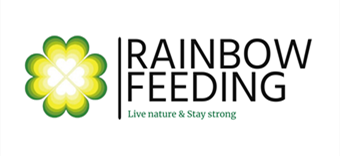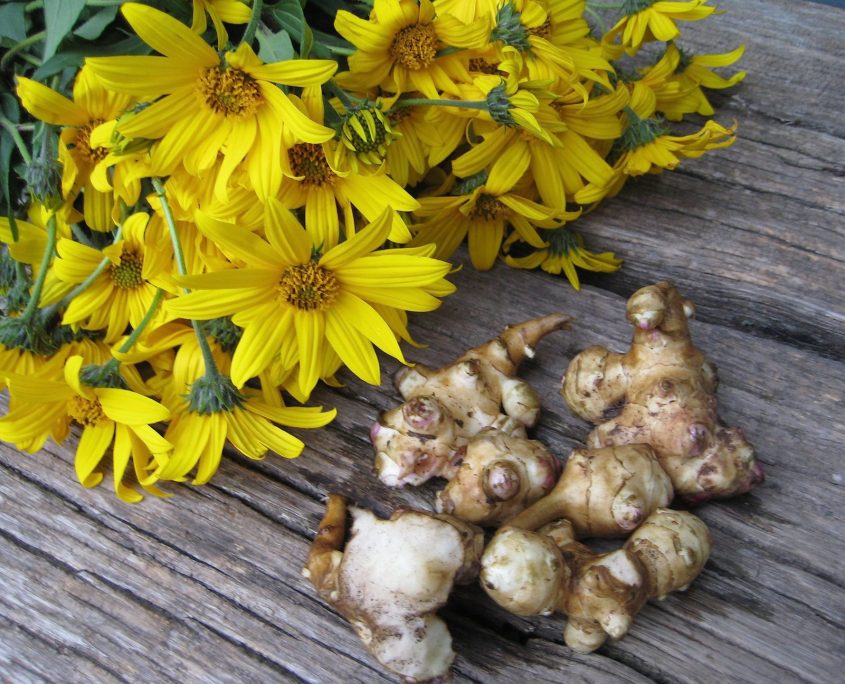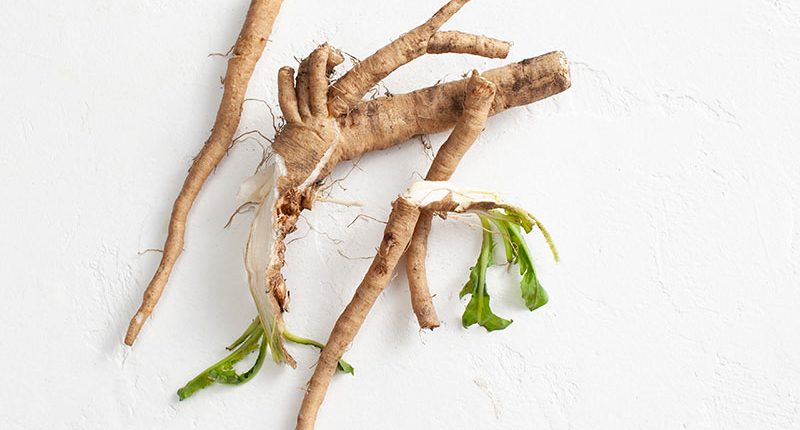What’s the difference between Jerusalem artichoke inulin and chicory inulin?
Inulin is a type of soluble dietary fiber and prebiotic fructan extracted from various plants, with Chicory Root (Cichorium intybus)and Jerusalem Artichoke Tubers (Helianthus tuberosus) are the two dominant plants for large-scale inulin extraction, chosen for their high inulin content (up to 15-20% by weight) and efficient processing. The choice between these two ingredients is not a matter of which is “better,” but which is optimally suited for specific product goals, target demographics, and technical requirements. This guide provides a detailed, strategic comparison to inform your sourcing and product development decisions.
What Exactly is Inulin?
Inulin powder is basically a type of soluble fiber pulled from certain plants; it’s a polysaccharide made up of chains of fructose molecules with a terminal glucose unit. The chains can vary in lengthIt’s a prebiotic superstar, meaning it helps probiotics (like those in yogurt) do their job better. It’s natural, low-calorie, and can help with things like steady blood sugar, better bowel movements, and even weight management. The two dominant plants for large-scale inulin extraction are chicory and Jerusalem artichoke.
Inulin from Jerusalem Artichoke
Jerusalem artichoke (Helianthus tuberosus), also known as sunchoke, offers up to 13g of inulin per 100g and is increasingly used industrially, especially in North America and Asia. Jerusalem artichoke extract is characterized by a more complex and diverse blend of fructooligosaccharides (FOS), specifically inulin-type fructans with a shorter average chain length, which naturally contain about 10-20% inulin. Short-chain FOS ferments faster in your gut, giving a speedy boost to beneficial bacteria. Studies show it might help with things like reducing inflammation or even supporting your immune system, thanks to extra minerals like potassium and iron that tag along from the tuber.
Inulin from Chicory
Chicory Root (Cichorium intybus) grows well in cooler climates, and its production is super efficient, often yielding more powder per plant. It is the top choice for industrial inulin production worldwide. Chicory roots contain up to 18g of inulin per 100g, making extraction cost-effective. Chicory inulin powder has a milder, almost neutral taste—perfect for baking or mixing into drinks without altering flavors much. It’s also great at mimicking fat in recipes.
Chicory inulin has longer molecular chains, which means slower fermentation, spreading the benefits throughout your entire colon. This can lead to more consistent results, like improved calcium absorption for stronger bones or better control over blood sugar spikes.
Jerusalem Artichoke Inulin VS Chicory Inulin
| Aspect | From Jerusalem Artichoke Tubers | From Chicory Roots |
| Source | Extracted from tubers of Helianthus tuberosus, a North American sunflower relative. Tubers contain 10-20% inulin by weight; sustainable crop on marginal lands, easier for organic certification. | Extracted from taproots of Cichorium intybus, a dandelion family plant. Roots have higher inulin content (15-60%, often ~45%); traditional and dominant commercial source, widely cultivated in Europe and Asia. |
| Chemical Structure | Lower average DP (e.g., ~5-9, with ~52% DP <9), higher proportion of short-chain fructans; fewer branches, more regular bonds. | Higher average DP (e.g., ~7-60, often 10+), higher proportion of long-chain fructans; more branches, compact structure. |
| Properties | Poorer low-temperature solubility; higher heat/acid stability; lower sweetness; weaker hygroscopicity and gelling; light, earthy/nutty flavor; amorphous structure, shear-thinning rheology. | Better low-temperature solubility; lower heat/acid stability; slightly sweeter with plant aroma; stronger hygroscopicity and gelling (good for textures); amorphous structure, shear-thinning rheology. |
| Health Benefits | Prebiotic: Promotes bifidobacteria, gut health, digestion; faster fermentation in proximal colon; may boost gut flora more; antioxidant, immunity enhancement, blood lipid lowering; better for zinc absorption (due to lower DP). | Prebiotic: Similar microbiota effects (e.g., +1.2 log bifidobacteria); slower fermentation in distal colon; aids calcium absorption, blood sugar control, osteoporosis prevention; stronger for iron/copper absorption and erythropoiesis (due to higher DP). |
| Applications | Food: Stable in high-temp/acid products (e.g., baked goods, low-sugar yogurt); supplements for intestinal regulation; cosmetics for moisturizing/antioxidant; emerging market. | Food: Excellent for fat/sugar replacement, texture in dairy, baked goods, gels; supplements for calcium/bone health; cosmetics as thickener/stabilizer; mature market. |
| Production & Yields | Lower inulin content (~55g/100g); variable yields year-to-year due to temperature/senescence; emerging, cost-effective alternative. | Higher inulin content (~88g/100g); higher, more stable yields; industrial standard with efficient extraction. |
|
Applications in Feeds |
Effective in aquaculture (e.g., tilapia growth), poultry (weight gain, livability), pigs (health, welfare), and calves (GI improvements). Less common in pet foods but gaining traction for organic/sustainable options. |
Widely used in dog/cat foods for digestive health, immune support, and as soluble fiber. Common in cereal-based diets; whole chicory may match or exceed pure inulin benefits. |
Conclusion
In the highly competitive health food market, the traceability of ingredients and scientific claims are of utmost importance. For us, clearly indicating whether the “inulin” used is “derived from chicory” or “derived from Jerusalem artichoke” reflects the transparency and professionalism of Rainbow Biotech. Today, we are providing free samples for application testing. Based on your specific product matrix and process parameters, we will find the inulin solution that can best enhance the market competitiveness of your products.



